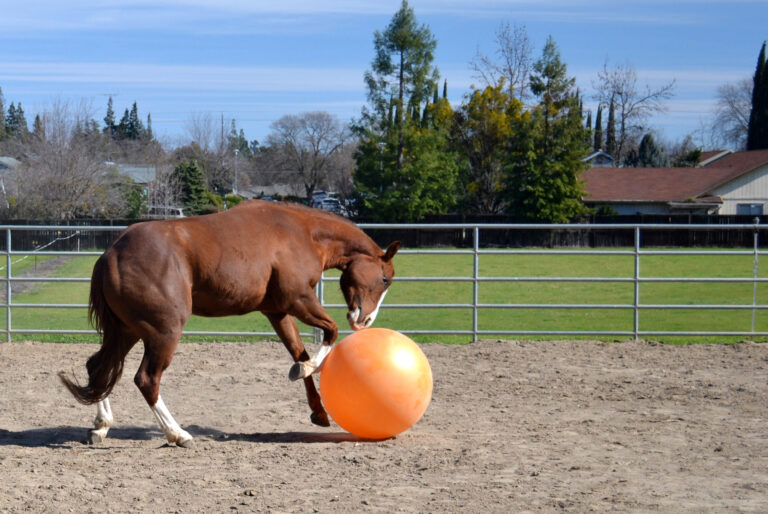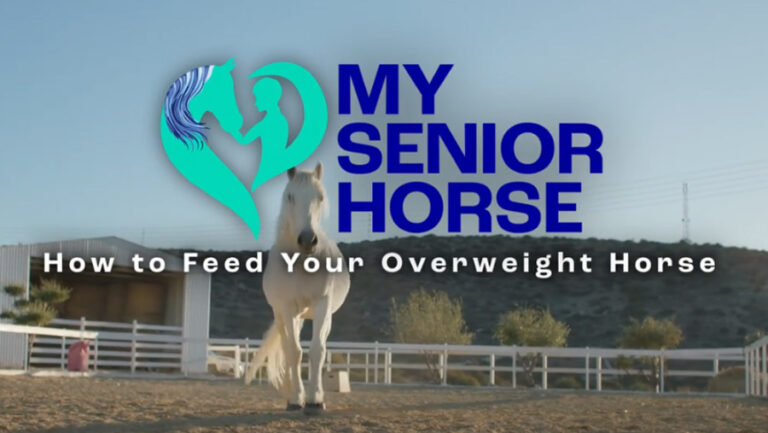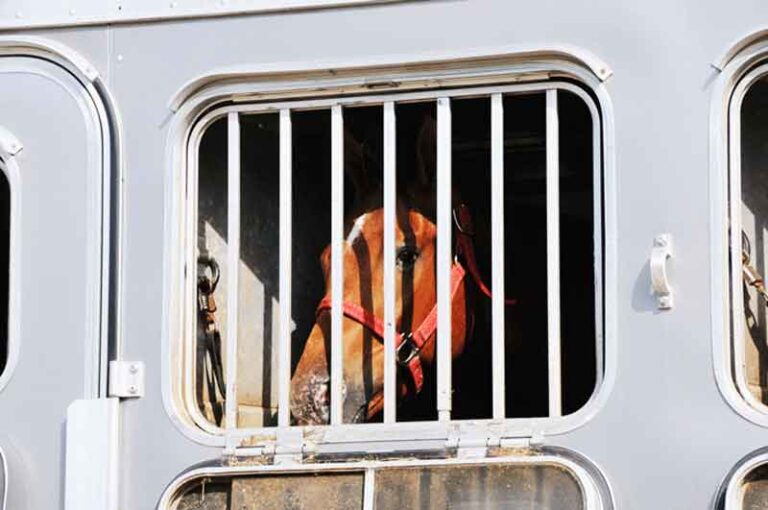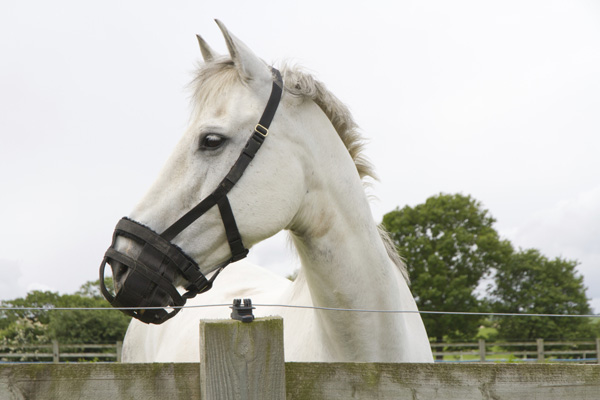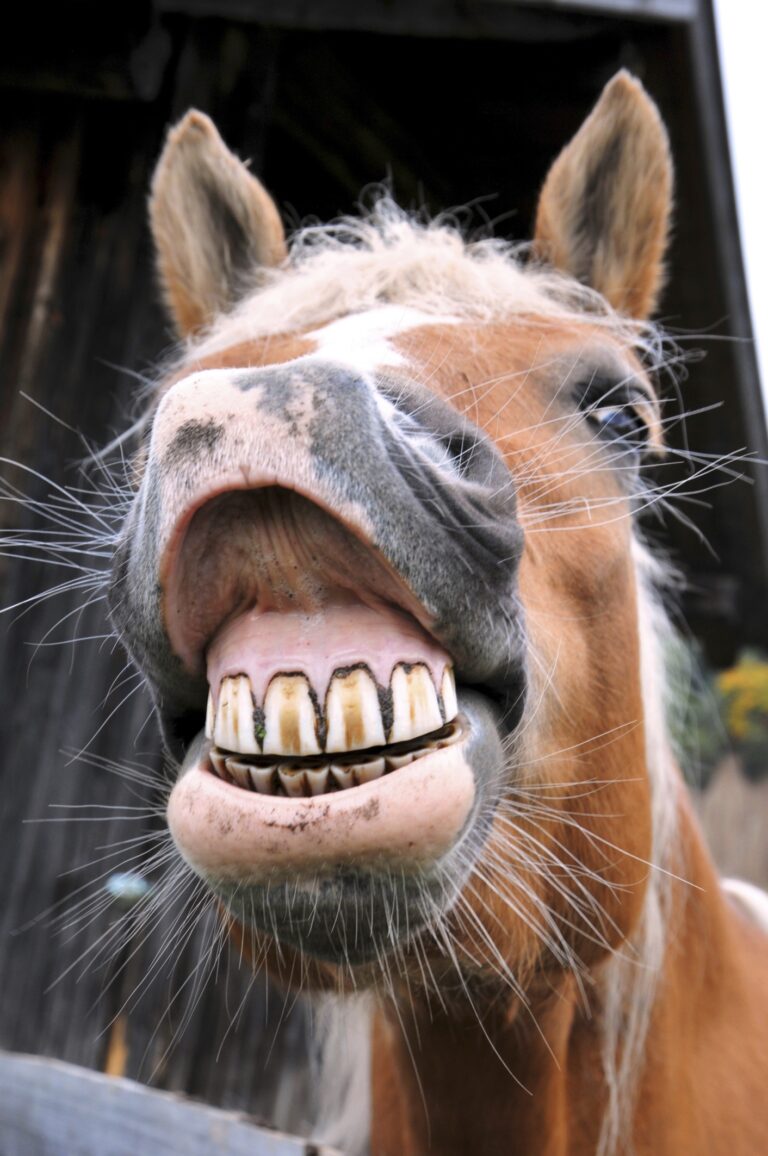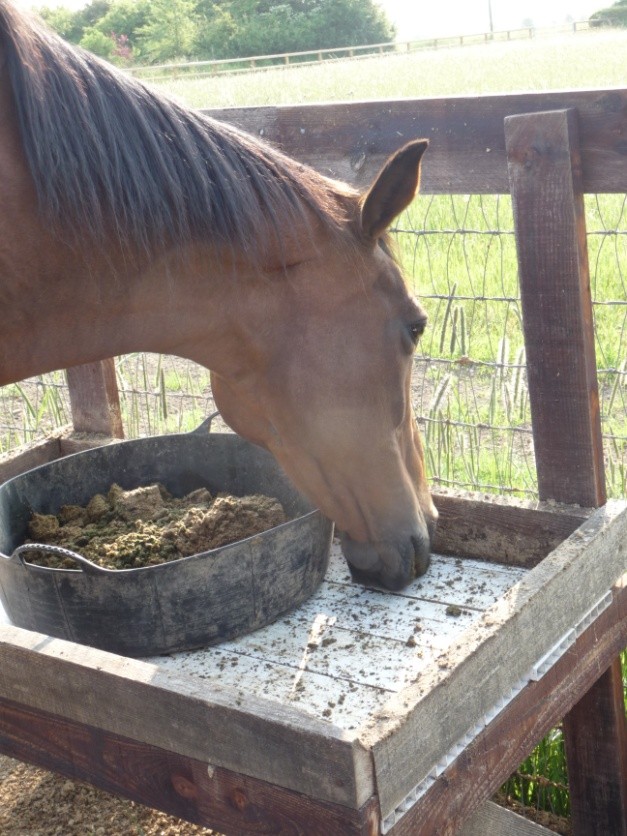The Ridden Horse Performance Checklist can help you uncover behaviors that are observed in ridden horses that could signify discomfort.
Lameness Versus Below-Expectation Performance
There is a common misconception that if no lameness is detectable when a horse is trotted in hand that the horse is non-lame (sound). This is not true.
A large proportion of horses that show lameness just when ridden (sometimes labelled as ‘bridle lameness’)—or that perform below expectations—have musculoskeletal pain. It is also important to recognise that a horse might trot normally when ridden, but can have problems in canter. (For example, it might have difficulties in establishing and maintaining canter with the correct leading forelimb on one rein.). This is a result of musculoskeletal pain.
People often blame the horse (for example, ‘the horse is only six, so is still weak’) or the rider. However, frequently the problems reflect musculoskeletal discomfort.
Riders often say that, ‘My horse doesn’t like dressage, but he/she jumps well, so there cannot be anything wrong.’ This is usually a misleading statement. Most horses that ‘don’t like dressage’ are experiencing discomfort.
Repetitive work in an arena, with turns and circles, is biomechanically demanding and is likely to accentuate any underlying pain.
Adrenaline and endorphins are released during jumping, making a horse ‘feel good.’ So, a horse with talent for jumping is likely to overcome low-grade discomfort during jumping. It might perform willingly and jump reasonably well. It is possible that the horse would perform even better if pain free!
Recognizing Lameness
There is substantial evidence that riders and trainers are poor at recognising lameness. Often poor performance or a failure to progress in training is blamed on either the horse or the rider. Instead, you should be asking why this poor performance is happening.
Horses are generally compliant, stoic, and keep going despite discomfort. That means musculoskeletal problems causing pain often slowly progress and secondary problems might develop. These include changes in movement patterns, loss of normal muscle function, wastage of muscles, and the development of abnormal myofascial tension.
When ultimately recognised, the problems might be more difficult to manage successfully than if the initial problem had been detected much earlier.
It is important to recognise that horses are prey animals and have evolved to conceal signs of pain. So, in the face of musculoskeletal pain, horses adapt their movement patterns to try to hide pain. They do this by reducing the range of motion of the back (‘stiffening the back’) and taking shorter steps. However, they often show behavioral changes that reflect discomfort.
The Ridden Horse Performance Checklist
There are many myths in the equine world about horses. People say that there are grumpy horses, lazy horses, and unwilling horses. However, we have to ask whether or not these labels correctly describe pain-free horses.
We have compared pain-free horses with those with musculoskeletal discomfort. Through this research, we identified 24 behaviors—the majority of which are at least 10 times more likely to be observed in lame horses than in non-lame horses.
This is the Ridden Horse Performance Checklist (otherwise known as the Ridden Horse Pain Ethogram).
There are many possible causes of each individual behavior. However, the display of eight or more of the 24 behaviors listed below is highly likely to reflect the presence of musculoskeletal pain.
The Ridden Horse Performance Checklist was developed as a tool that can, with practice, be used by anyone to detect the likely presence of musculoskeletal discomfort. This can facilitate the recognition of problems that can influence performance.
If a problem is recognised early, with appropriate investigation to identify the problem and initiation of a suitable treatment and management program, we hope for a successful outcome without the development of secondary problems.
How to Apply the Ridden Horse Performance Checklist
The Ridden Horse Performance Checklist should be applied while a horse is working on the flat for approximately 10 minutes, after a period of warm-up. The horse should be observed in walk, trot, and canter (for our Western readers, walk, jog, and lope) This observation should include transitions and circles of 20m and 10m diameter in rising trot.
If a horse is working beyond novice level, it should be observed performing its full repertoire of movements. It is only during more difficult movements that signs of discomfort might be apparent.
Many of the definitions include a minimum time for which a behavior is displayed or require that the behavior is shown repeatedly.
When first using the checklist, it is important to time the time-defined behaviors. Use a checklist to record the observations. Watch carefully for repeated behaviors.
For example, if a horse puts its tongue out transiently, mark the checklist with a + on the first occasion, then add extra +s each time the behavior is seen. This will remind you that the behavior was seen more than once.
To apply the checklist accurately, a horse should be watched from behind, the side, and from the front on each rein.
It is best to stand in the corner of an arena and move to the opposite corner when the horse changes direction. If you concentrate and watch carefully, you will often observe that behaviors such as a head tilt might be observed for several strides intermittently, but repeatedly, throughout the work period.
A total score of less than 8/24 does not preclude lameness or other musculoskeletal pain. The score will be determined in part by a horse’s pain threshold, which varies among horses, and the intensity of work. Judgements can only be made by observing a horse in action. Still photographs can be highly misleading.
The checklist can either be applied live, in real time, or retrospectively from high-quality video footage acquired in an appropriate way.
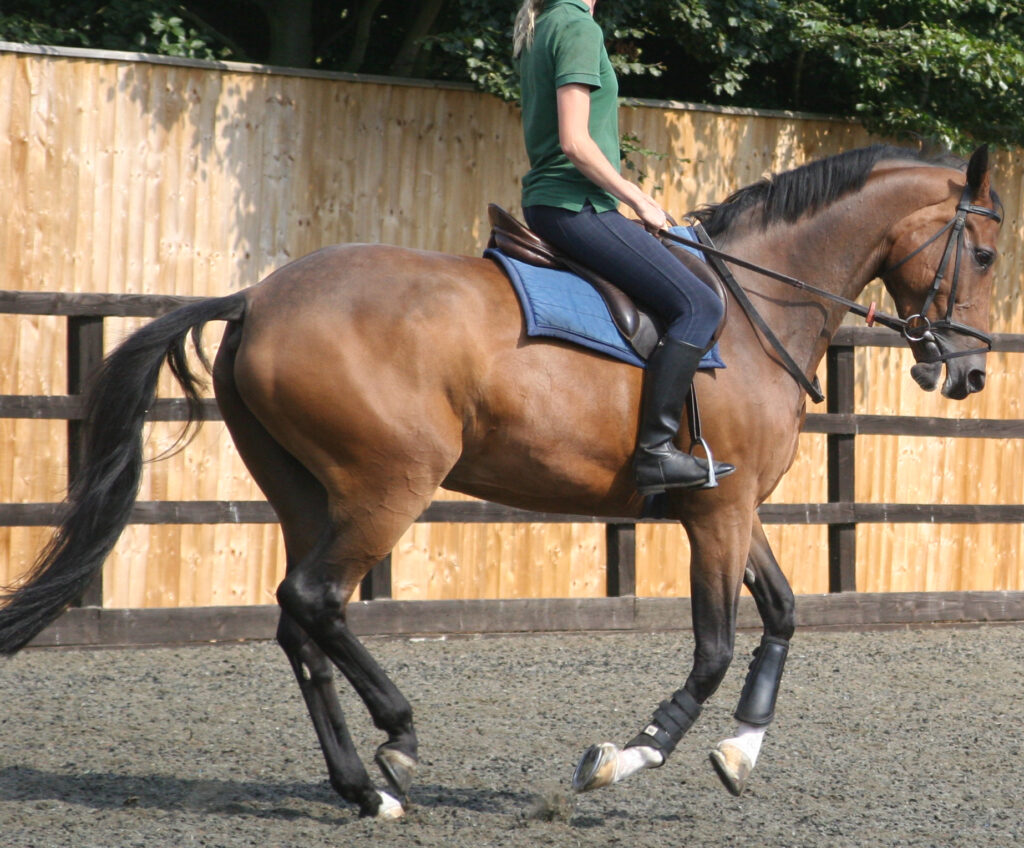
The 24 Behaviors of the Ridden Horse Performance Checklist
- Repeated changes of head position up and down, not in rhythm with the trot (head nodding, head tossing);
- Head tilted repeatedly (viewed from the front, the nose is tipped to one side and one ear is lower than the other);
- Head in front of vertical (>30⁰) for ≥10 seconds (assessed from the side);
- Head behind vertical (>10⁰) for ≥10 seconds (assessed from the side);
- Head moving from side to side, repeatedly (best seen from the front);
- Ears rotated back behind vertical (both or one only) ≥5 seconds or repeatedly lay flat;
- Eyelids closed or half closed for 2-5 seconds;
- Sclera (the white of the eye) exposed repeatedly (presuming that the sclera in each eye is not visible at rest);
- Intense stare (also described as a glazed expression or ‘zoned out’) for ≥5 seconds;
- Mouth opening ± shutting repeatedly with separation of teeth, for ≥10 seconds;
- Tongue exposed, protruding, or hanging out, and/or moving in and out repeatedly;
- Bit pulled through the mouth on one side (left or right) repeatedly (check in advance that the canons of the bit are not too wide for the horse’s mouth);
- Tail clamped tightly to buttocks in the midline, or held to one side repeatedly (a crooked tail);
- Large tail swishing movements done repeatedly up and down/side to side/circular;
- A rushed gait (frequency of trot steps >40/15 seconds), or an irregular rhythm in trot or canter, or repeated changes of speed in trot or canter;
- Gait too slow (frequency of trot steps <35/15 seconds), which might resemble a passage-like trot;
- Hindlimbs do not follow tracks of forelimbs but are repeatedly deviated to the left or right, moving on 3 tracks in trot or canter (assessed from behind or in front);
- Abnormalities of canter: repeated leg changes in front and/or behind, or repeated (more than once) strike off on wrong leg, or becoming disunited;
- Spontaneous changes of gait (e.g., breaks from canter to trot or trot to canter), more than once;
- Stumbles or trips more than once in front or behind, or has repeated bilateral hindlimb toe drag;
- Sudden change of direction against rider’s cues or ‘spooking’;
- Reluctance to move forward (has to be kicked ± verbal encouragement) or stops spontaneously;
- Rearing;
- Bucking.

Interpretation of the Results
You will need to practice to apply the checklist. It can be useful to get a friend to record video footage of you riding from corners of the arena.
It is important that the horse fills the full screen and that the video is evaluated on a sufficiently large screen (full screen on a laptop or iPad). Viewing on a telephone screen will result in missing crucial details.
It might be helpful to assess the video several times. Focus on individual behaviors each time. You can stop and replay the video to check observations. Do it with a friend and discuss what you see.
Remember that it is the total score that is important. Individual horses vary in the behaviors that they might show.
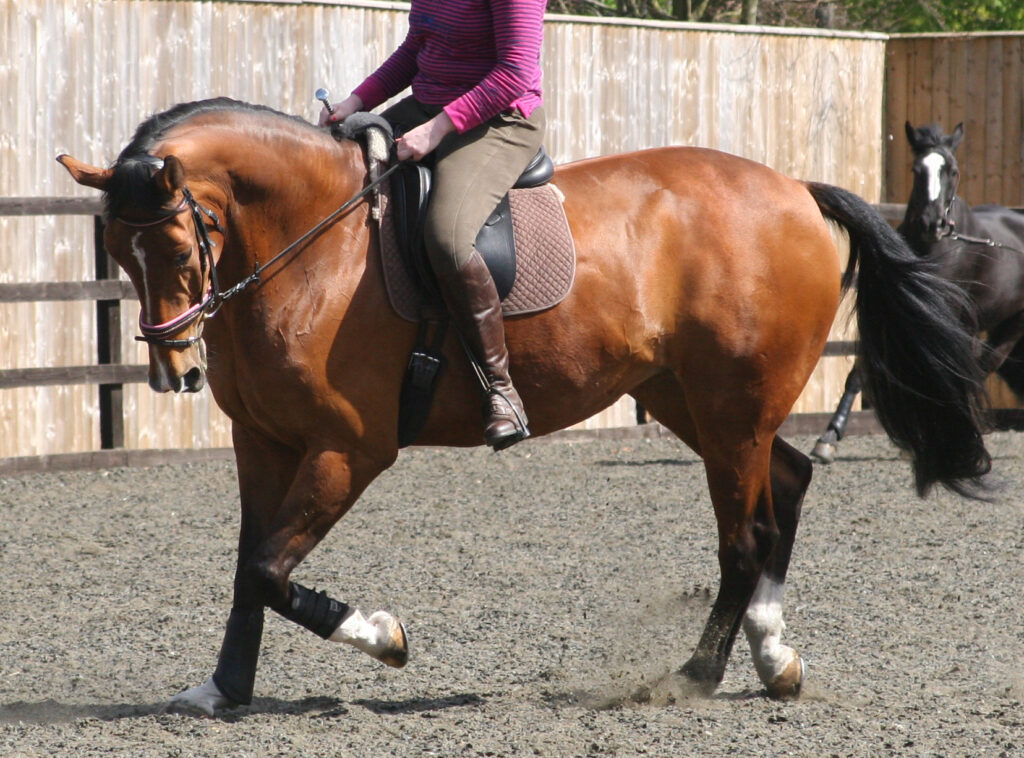
The behaviors displayed do not tell us anything about the source of pain. Two horses might have similar sources of pain but show different behaviors.
Skilled riders might improve a horse’s gait quality, but usually cannot conceal behavioral signs consistent with discomfort.
Conflict behavior, the response to conflicting cues from a rider (for example, applying leg cues but restraining the horse with rein cues), does not result in a score of ≥8/24 in the absence of pain. Likewise training problems should not result in a score of ≥8/24 unless discomfort is an underlying cause.
Application of the Ridden Horse Performance Checklist
The behaviors of the Ridden Horse Performance Checklist are not habitual when reflecting discomfort. If underlying pain is removed—for example by the use of nerve blocks (‘numbing’ a limb to remove pain or infiltration of local anaesthetic solution around imping spinous processes, so-called ‘kissing spines), there is an immediate improvement in gait quality, lameness. Also, the total number of behaviors of the Ridden Horse Performance Checklist that are displayed will be substantially reduced.
This indicates that there is a causal relationship between pain and the behaviors of the Ridden Horse Performance Checklist.
However, some individual behaviors that are included in the Ridden Horse Performance Checklist might occur in isolation. That means they might not necessarily be associated with pain and could be habitual.
Bear in mind that horses can learn quickly, but they unlearn slowly.
For example, something might have triggered a horse to rear during ridden exercise. That something might have been transient pain, but could also have been a non-painful stimulus. The rider might have stopped work and dismounted. The horse was effectively rewarded for having reared. This might now become habitual even in the absence of the same trigger. This rearing behavior will only be resolved by retraining.
If a horse has a Ridden Horse Performance Checklist score of ≥8/24 then it is advised that it should be examined by an equine veterinarian with experience in lameness and poor performance investigation. If a horse is being regularly monitored, for example monthly, and the Ridden Horse Performance Checklist score is progressively increasing (say from 4/8 to 7/8), this is also an indicator that something is not right. There needs to be an evaluation of the whole horse and the horse, tack, rider triad.
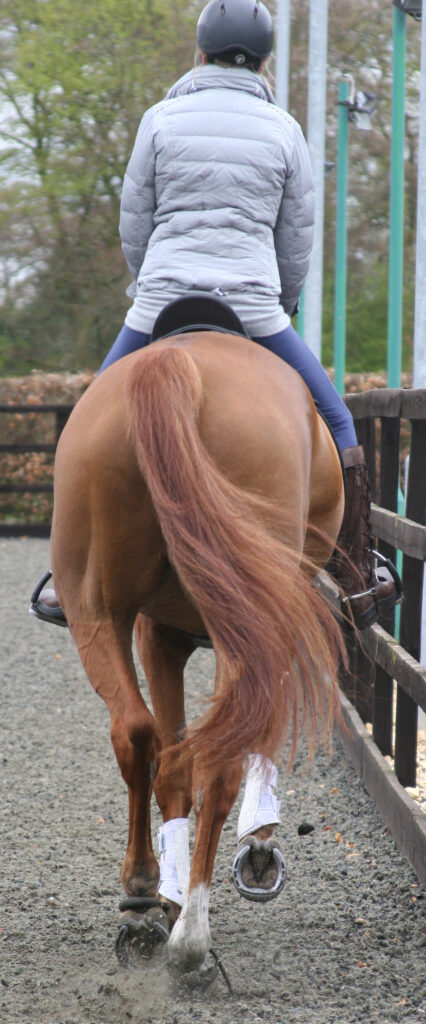
has been placed behind the left front foot. The left
hindlimb is on an inner track. Courtesy Dr. Sue Dyson
When to Use the Ridden Horse Performance Checklist
Once you start to look at the behavior of horses during ridden exercise and think about what you are seeing, you will notice the difference between comfortable horses and those that are uncomfortable. People who have trained themselves to use the Ridden Horse Performance Checklist often say, ‘Once you have seen it (it = behavioral signs of discomfort), you cannot unsee it.’
The Ridden Horse Performance Checklist can be used as a regular monitoring tool. It can be used to
- confirm that it is likely that your horse is comfortable!
- during rehabilitation following injury to confirm that the horse is making progress or to highlight that something is not quite right.
- when assessing a horse that a purchaser is considering buying to help to determine whether or not the horse is comfortable.
- during saddle fitting.
- to diplomatically advise a rider that his/her size might be excessive for the horse.
Understanding the Significance of Ridden Horse Performance Checklist Scores
It has been demonstrated that even low-grade lameness or musculoskeletal pain that alters movement patterns without causing conventional lameness can influence horses’ competition performance.
The Ridden Horse Performance Checklist has been applied to horses competing in Grand Prix dressage, 5* three-day events, and low-level one-day events.
High Ridden Horse Performance Checklist scores are often associated with poorer performance compared with horses with low Ridden Horse Performance Checklist scores.
From an equine welfare perspective, it is important to recognise that the majority of horses that are competing have low checklist scores (0-4/24). However, a higher proportion of horses competing at low-level, one-day events have higher scores and a higher frequency of overt lameness.
It is also important to recognise that horses with high Ridden Horse Performance Checklist scores are often less responsive to a rider’s cues and are less comfortable for a rider.
Removal of the horse’s pain, with a reduction in the Ridden Horse Performance Checklist score, usually improves ‘rideability’ and the rider’s comfort.

Final Words
The Ridden Horse Performance Checklist is a powerful tool that can be used, with practice, either to indicate that a horse is comfortable or to identify the likely presence of musculoskeletal pain. It is applicable to horses of any age, including senior horses.
Early identification of problems and prompt accurate diagnosis are keys to successful management, and longevity of performance.
Find Out More
- A detailed course describing how the Ridden Horse Performance Checklist (also known as the Ridden Horse Pain Ethogram) was developed. You can find more information, with many case examples (including video recordings) and interactive quizzes at Equitopiacenter.com.
- Further information, downloadable illustrations of all the behaviors, and a checklist are also available from 24horsebehaviors.org.
- Harmonious Horsemanship: Use of the Ridden Horse Ethogram to Enhance Potential, Partnership and Performance, written by Sue Dyson and Sue Palmer, is a useful reference book. It includes much more detail and riders’ personal experiences of using the checklist.
- Read the next article in this series: Additional Behavior and Musculoskeletal Pain Signs in Ridden Horses.
-
Sue Dyson, MA, VetMB, PhD, initially worked in the United States after graduating veterinary school, then returned to England and ran a clinical referral service for 37 years. Dyson is active in clinical research and has published more than 450 scientific papers related to lameness, ridden horse behaviour, and diagnostic imaging. Dyson also is a rider and has produced horses to top national level in eventing and show jumping. Dyson is a British Horse Society Instructor (Teaching and Stable Management).View all posts




